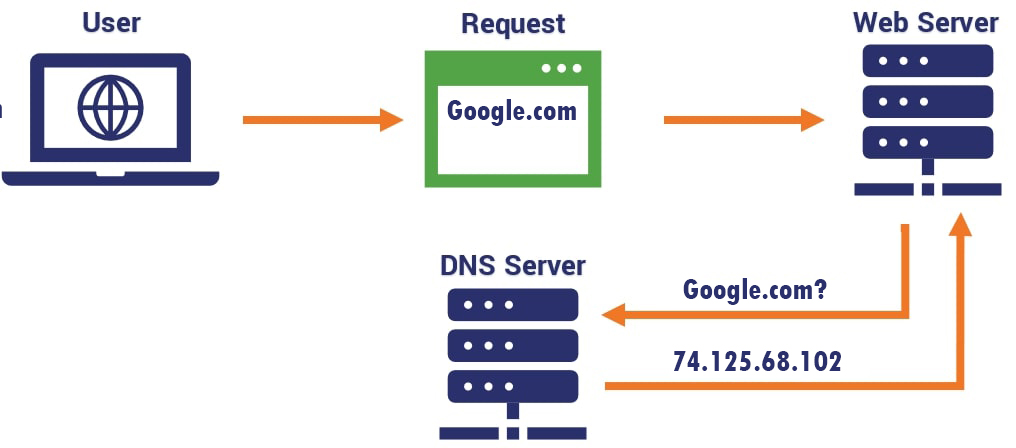What is DNS
DNS stands for domain name server or domain name system. It is a type of system in which a domain name is converted to an IP address. The example of a domain name is www.google.com and the example of IP address is 192.168.1.1.
DNS is a type of phonebook in which all the IP addresses are stored with associated domain names.
When a computer or mobile user types a domain name in the address bar of the browser then the browser sends a request to the DNS server. The DNS server finds the IP address and then connect it with the hosting and then the web page is displayed on the browser.

There are some rules to define a domain name. For example, it is not allowed to use a hyphen (-) at the start and end of the domain name. Also, the domain name cannot be more than 253 characters.
DNS acts as a communicator between humans and computers. The computer understands IP addresses while humans understand English words. So DNS convert English words (e.g. www.google.com) to IP address (e.g. 74.125.68.102)
The IP address is understandable by the browser. The browser sends a request to the Google server and Google servers send the web page to the browser.
Types of DNS
There are four main types/components of DNS servers.
DNS Resolver:
The DNS resolver is provided to ISP (Internet Server Providers). The resolver is connected to other servers which are root nameserver, TLD nameserver and authoritative nameserver. The resolver first checks whether the IP address is stored in the cache of the resolver or not. If the IP address is not found in the cache then it sends the request to the root nameserver.
Root nameserver:
There are 13 sets of root nameserver. Each set has several servers that are placed in different locations on the globe.
The resolver sends a request to the root nameserver. The root name server identifies the TLD name (.com, .NET etc) and gets the IP address that is related to the TLD nameserver. The resolver gets the TLD IP address from the root nameserver and sends it to the TLD nameserver.
TLD nameserver:
The TLD (top-level domain) nameservers are responsible for storing all the information about the domain extensions i.e. .com, .net, .edu and others. All the TLD extensions have a unique IP address. It sends that IP address to the authoritative nameserver for fetching the complete IP address. The TLD name server of .com stores all information about the .com domain extension and similarly .net TLD nameserver stores all the information about the .net domain extension.
Authoritative nameserver:
The authoritative nameserver generates the final IP address that is understandable by the web browser. It stores all the IP addresses mapped with domain names. The first three nameservers are used to first filter out the IP addresses stored in the authoritative nameserver.
Example of DNS
Requesting a website in chrome browser e.g. typing www.google.com in a web browser and that domain name is translated to IP address. An IP address is understandable by the Google webserver and then the Google web server sends the complete web page data to the browser. The responsibility of DNS is to translate the domain name into IP address.


















